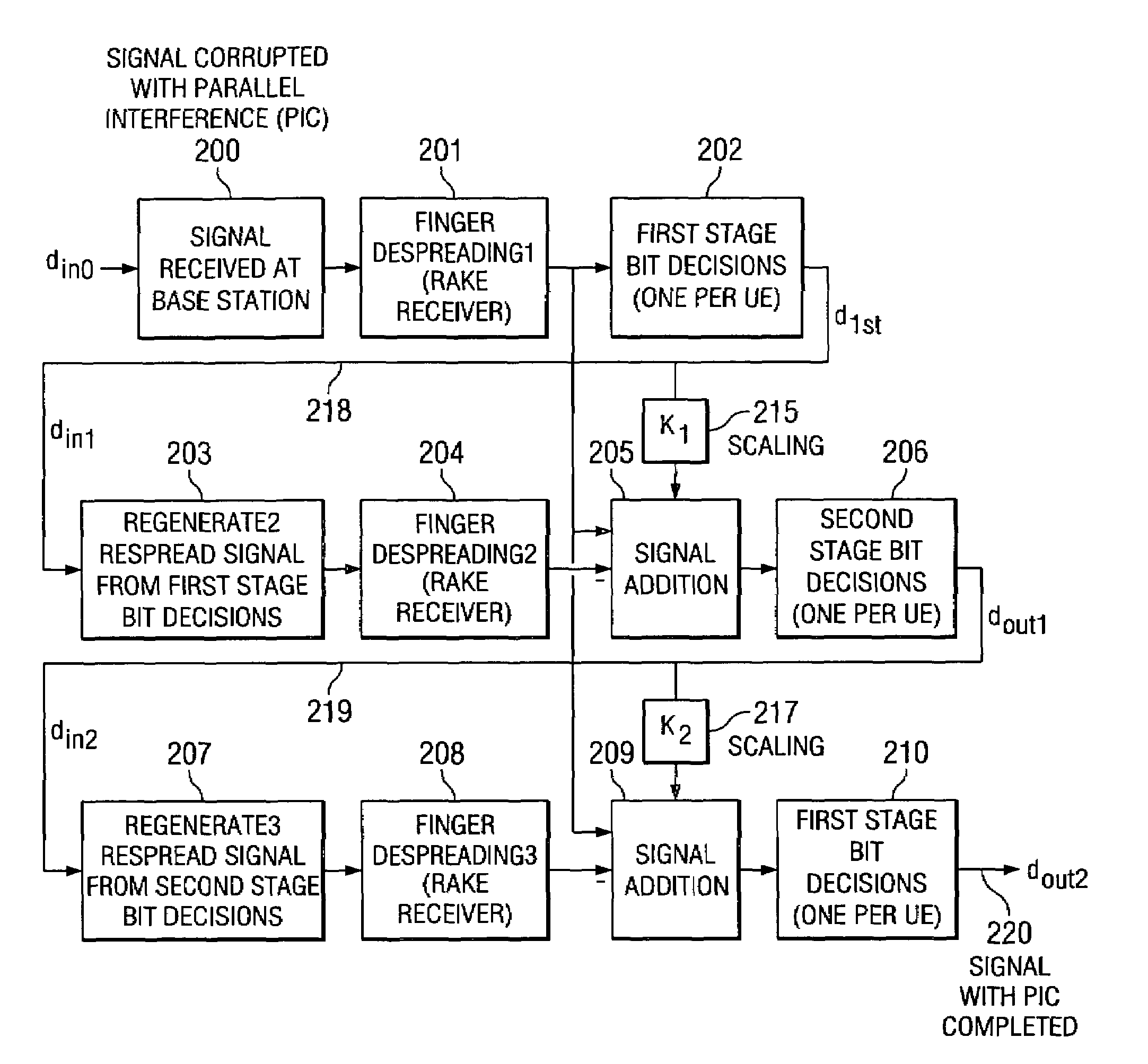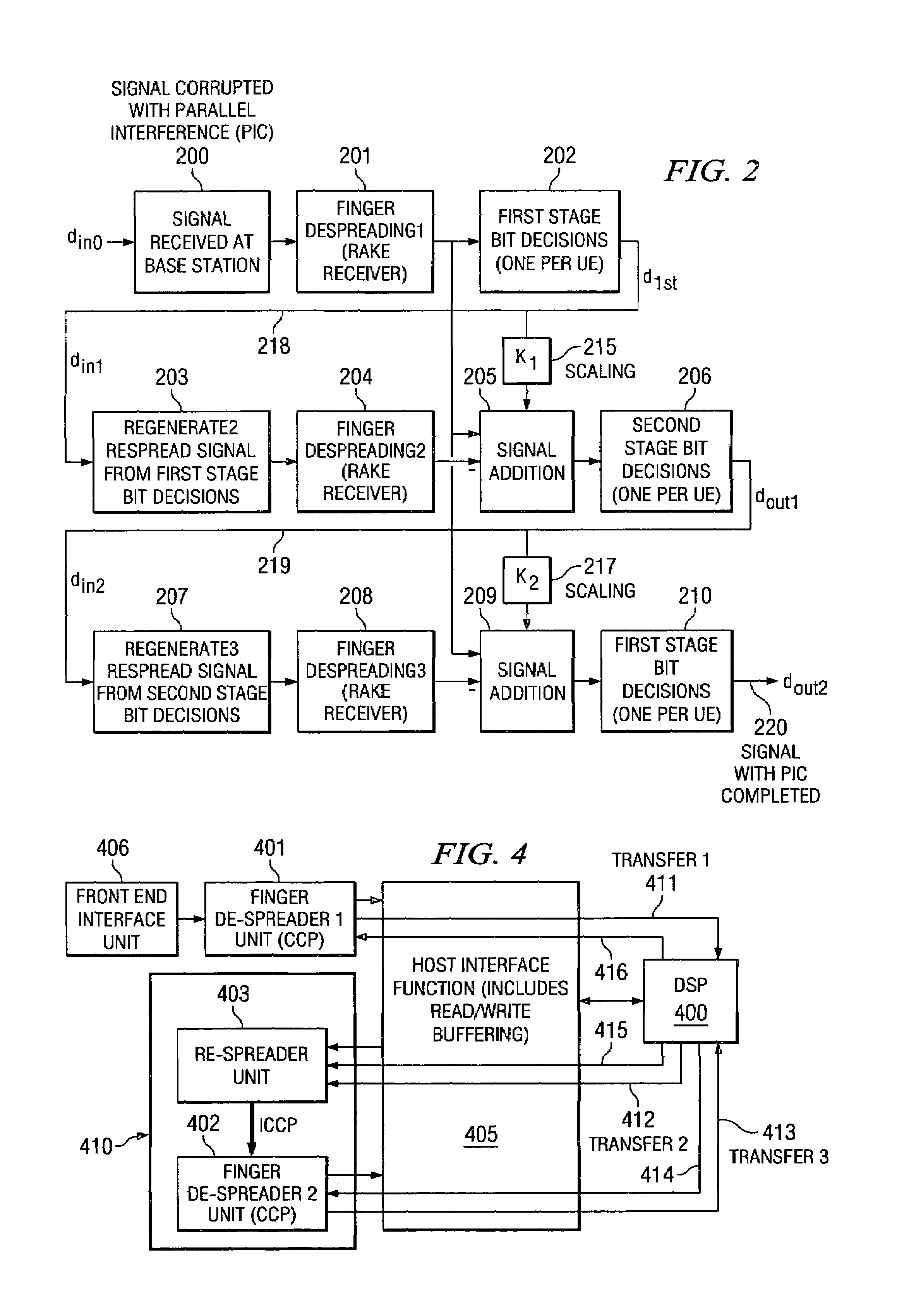Parallel interference cancellation device for multi-user CDMA systems
a cdma system and interference cancellation technology, applied in the direction of amplitude demodulation, line-fault/interference reduction, pulse technique, etc., can solve the problems of limited chip transmission rate, frequent or highly repetitious interference of received signals at the base station, etc., to improve the transmission symbol estimation, reduce the cost of system maintenance, and reduce the effect of silicon area
- Summary
- Abstract
- Description
- Claims
- Application Information
AI Technical Summary
Benefits of technology
Problems solved by technology
Method used
Image
Examples
Embodiment Construction
[0027]The interference cancellation co-processor (ICCP) of this invention is a task-based processor designed to work with digital signal processors (DSP) and co-processors for implementing the parallel interference cancellation (PIC) algorithm. Signal processing relevant to the basic parallel interference cancellation operation for each stage in an iterative process is described by the matrix expressions 101 through 108 illustrated in FIG. 1.
[0028]The parallel interference cancellation problem is efficiently solved by the interference cancellation co-processor, which operates on vectors of CDMA chips in parallel, for example 64 chips at a time. All interfering user signals are spread by their respective pseudo-noise (PN) sequences, added together and interpolated to form a resulting vector of interference samples. This vector of samples is then passed into a correlator co-processor for despreading with the user pseudo-noise sequence. The resulting despread symbol is an estimate of t...
PUM
 Login to View More
Login to View More Abstract
Description
Claims
Application Information
 Login to View More
Login to View More - R&D
- Intellectual Property
- Life Sciences
- Materials
- Tech Scout
- Unparalleled Data Quality
- Higher Quality Content
- 60% Fewer Hallucinations
Browse by: Latest US Patents, China's latest patents, Technical Efficacy Thesaurus, Application Domain, Technology Topic, Popular Technical Reports.
© 2025 PatSnap. All rights reserved.Legal|Privacy policy|Modern Slavery Act Transparency Statement|Sitemap|About US| Contact US: help@patsnap.com



